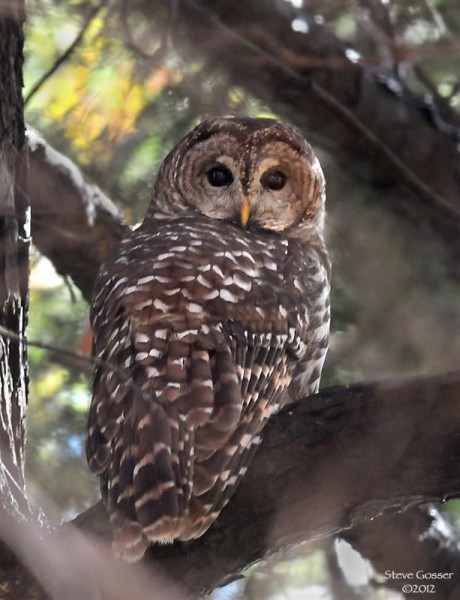
How do owls turn their heads this far without killing themselves?
Trauma experts know that when humans turn their heads too far or too fast the arteries to the head are stretched or torn, cutting off the blood supply or producing blood clots that can kill.
Why doesn’t this happen to owls? A team at Johns Hopkins decided to find out.
Led by medical illustrator Fabian de Kok-Mercado, they used imaging technology on barred, snowy and great horned owls who had died of natural causes. The researchers found four adaptations that make the owls’ wide range of movement possible:
- As in humans, the major arteries that feed the brain go through bony holes in the vertebrae but in owls these holes are 10 times larger than the arteries, allowing them to move within the hole without pinching.
- The owls’ vertebral artery enters the neck higher up than in other birds — in the 12th vertebrae rather than the 14th. This provides more slack.
- When an owl turns its head the arteries at the base of the head balloon to take in more blood. In humans the arteries get smaller and smaller.
- Owls also have small vessel connections between the carotid and vertebral arteries so if one path is blocked the other still works.
A simple turn of the head that’s so hazardous to us is all in a day’s work for an owl.
Read more about the study here in Science Daily.
(photo of a barred owl by Steve Gosser)
Maybe a study may need to be done on the neck dynamics of a teen-age boy,when a curvy young lass speeds by in a convertible. Very owl-like physiology,indeed! Take it from The Great Grey OOOOOoowl !
You are featuring a Superb Owl right after the Super Bowl!
Bill, It’s great to see that you’ve lost none of your wit!